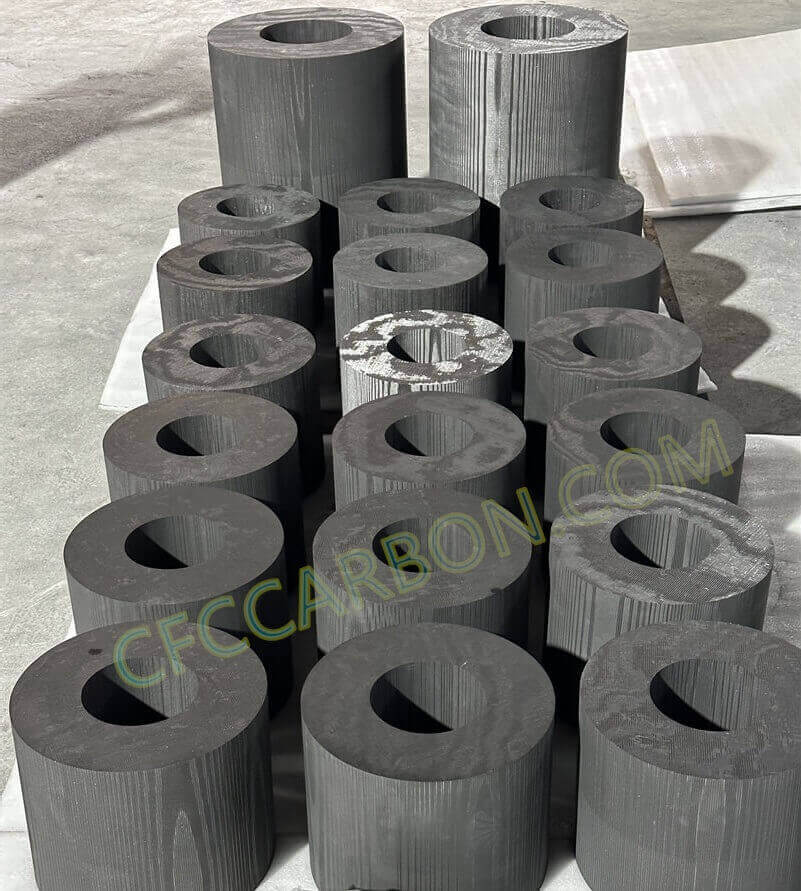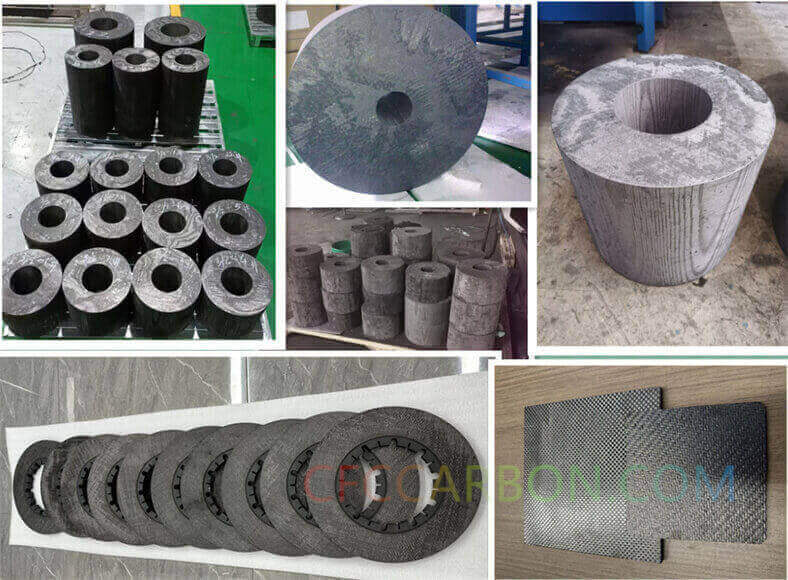Title: Breakthrough Insights: Boron’s Dual Role in Protecting C/C Composites from Catalytic Oxidation
Subtitle: New Study Reveals How Boron Oxide Outperforms Phosphorus in Combating High-Temperature Corrosion
C/C composites, renowned for their exceptional thermal stability, face persistent challenges from catalytic oxidation at high temperatures.

3D xyz CFC CFRC CC carbon fiber composites rods blocks tubes pipes cylinders (1)
Recent research highlights boron’s unique dual mechanisms in inhibiting this degradation—a discovery with critical implications for aerospace and industrial applications.
Boron vs. Phosphorus: Divergent Inhibition Pathways
While phosphorus compounds have long been studied for oxidation resistance, boron emerges as a superior alternative. Unlike phosphorus, boron operates through two synergistic mechanisms:
-
Active Site Reduction: Boron lowers the Fermi level of carbon, reducing reactive sites prone to oxidation.
-
Physical Blockage: Boron oxide (B₂O₃) forms a protective layer that melts at 450°C, sealing carbon fibers and matrix pores.
Wu and Radovic’s seminal work demonstrated that boron doping and B₂O₃ deposition completely suppress calcium-catalyzed oxidation. SEM/XRD analyses confirmed B₂O₃’s ability to block interfacial contact between catalysts and carbon, disrupting redox reactions.
The Structural Secret: Boron’s Atomic Compatibility
McKee’s groundbreaking theory explains why boron excels: the O-O bond distance in –BO₃ groups aligns perfectly with zigzag carbon atom spacing in graphene layers. This atomic-level compatibility enables boron to “lock” active edges, preventing catalytic agents like calcium from initiating oxidation chains.

3D 4D carbon fiber composite material manufacturer factory -airplane brake disc plates sheets U L profiles-2D(s)
Limitations and Potassium’s Resilience
Despite its efficacy against calcium, boron shows minimal inhibition for potassium-catalyzed reactions. Potassium salts’ high mobility allows them to bypass B₂O₃ barriers and maintain carbon contact. Intriguingly, Wu and Radovic observed a post-peak oxidation rate drop, hypothesizing that B₂O₃ reacts with potassium to form a glass-like layer. While unverified, this mechanism could revolutionize C/C protection if proven.
Phosphate Coatings: A Complementary Strategy
Tricot et al. pioneered mono-aluminum phosphate (Al(PO₃)₃) coatings, achieving near-total oxidation resistance. In tests at 650°C:
-
Unprotected samples lost 30-62% carbon in 3 hours.
-
Al(PO₃)₃-coated samples retained >99.5% carbon.
Related data revealed NaAlP₂O₇ formation in protected samples—a testament to the coating’s ability to convert catalysts into inert compounds. As noted by CFC Carbon experts (www.cfccarbon.com), such hybrid coatings are now being scaled for turbine blade applications.
Boron in Glassy Matrices: Industry Applications
Devecerski et al. achieved 4% boron integration into composite matrices. Post-oxidation, B₂O₃ formation reduced sodium acetate-catalyzed degradation by reacting with Na₂O to create sodium borate (Na₂B₄O₇). Though CFCCARBON confirmation remains elusive, practical tests on borax-soaked composites mirrored these anti-catalytic effects—a promising lead for industrial adoption.
Future Directions: Bridging Theory and Practice
While boron-based strategies dominate current research, challenges persist:
-
Improving potassium resistance through hybrid coatings
-
Optimizing B₂O₃ stability above 600°C (where boron oxycarbides form)
-
Scaling lab techniques to industrial processes
CFC Carbon (www.cfccarbon.com) reports growing demand for boron-enhanced C/C composites in hypersonic vehicle components, citing a 40% increase in oxidation lifespan during recent trials.
related news /articles:
Protection Mechanisms Against Catalytic Oxidation in C/C Composites (3)
Inhibition oxidation of carbon-carbon composites (1)
Oxidation of inhibited carbon-carbon composite (2)
Liquid phase infiltration of CC composites (2)—thermoset resin matrices